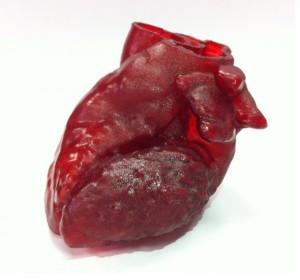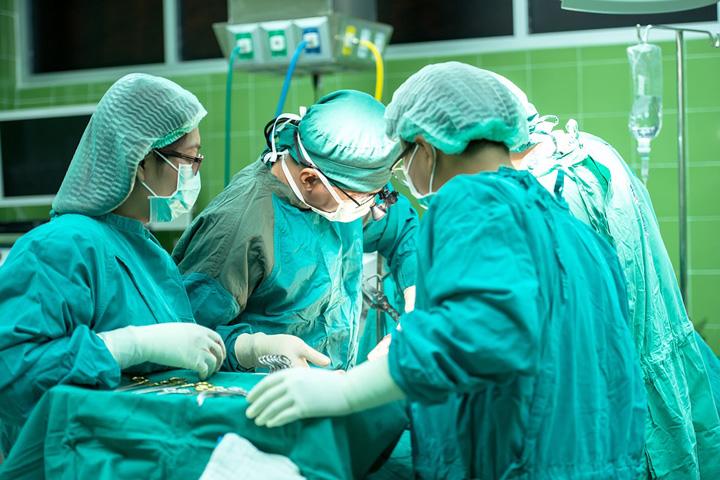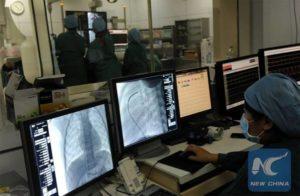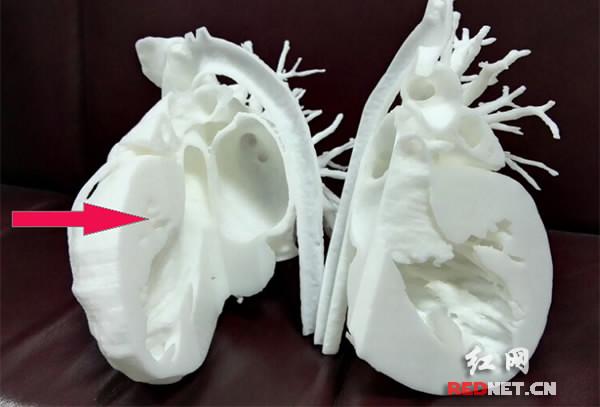3D Printed Patient-Specific Heart Models Used in Complex Pediatric Surgeries in China’s Hunan Province for the First Time
 Time and time again, we see the massive benefits of 3D printing in the medical world. 3D printed patient-specific models of the body’s organs can help surgeons plan out their risky procedures well in advance. It’s one of the benefits we hear a lot about with 3D printing: you can hold 3D printed objects in your hands, and see exactly what you have to work with. This can be especially helpful for surgeries involving what many consider to be our body’s most important organ: the heart.
Time and time again, we see the massive benefits of 3D printing in the medical world. 3D printed patient-specific models of the body’s organs can help surgeons plan out their risky procedures well in advance. It’s one of the benefits we hear a lot about with 3D printing: you can hold 3D printed objects in your hands, and see exactly what you have to work with. This can be especially helpful for surgeries involving what many consider to be our body’s most important organ: the heart.
If doctors are able to plan out ahead of time exactly what they will do when the patient is on the operating table, they can potentially avoid any surprises in the operating room. These surgeries can be even scarier when they’re happening to vulnerable babies in pediatric procedures. 3D printed heart models have helped surgeons prepare to place an infant’s heart back inside her chest, and replace two heart valves through blood vessels in just one operation.
Several months ago, for the first time ever in the country, doctors in China used a full-sized 3D printed model of a young patient’s heart to plan out ahead of time an extremely complicated cardiac surgery. The nine-month-old baby, due to a rare birth defect, had to undergo dangerous open heart surgery. But thanks to a 3D printed patient-specific heart model, the surgery was successful and the baby, expected to survive with few lasting effects, was transferred to a general hospital ward just a week later. Now, Chinese surgeons have brought 3D printing technology into the operating room again, in two complex pediatric heart surgeries.
In the mountainous Hunan province, located in South Central China, is the Second Xiangya Hospital of Central South University, which was originally founded in 1906 as Yali Hospital and run by professors and doctors of Yale University. It is one of the oldest western hospitals in the country, and according to its website, is in the top tier of scientific research in China and is one of the country’s leading medical education hospitals. So its reputation clearly speaks for itself.
The two procedures mark the first time that 3D printing technology has been used in for pediatric cardiovascular surgery in Hunan. The first patient was a 13-year-old girl who was suffering from hypertrophic obstructive cardiomyopathy; this condition causes the heart muscle to grow abnormally thick. According to Dr. Yang Yifeng, a cardiologist with Second Xiangya Hospital of Central South University, the second patient was significantly younger than the first: a 3-year-old boy with severe left ventricular outflow tract obstruction, which can cause symptoms such as shortness of breath, chest pain, and fainting.
In both of these difficult pediatric cases, the surgeons involved decided to produce a 1:1 replica of each patient’s heart using a 3D printer, due to the complexity of the surgeries. Dr. Yang explained that the models would allow the doctors to carefully study each condition and plan the respective surgical procedures.
Both surgeries were successful, and Dr. Yang said that both of the young patients were recovering quite well. 3D printing technology is clearly being used more often by doctors in China, which can only mean good things for the country’s hospitals. 3D printing in the medical field has many benefits: it can improve surgical precision for difficult and sometimes dangerous procedures, and doctors can use 3D printed models to discuss illnesses, injuries, and surgeries with other doctors, and even their patients. Discuss in the 3D Printed Heart Models forum at 3DPB.com.
[Source: CGTN.com]
Subscribe to Our Email Newsletter
Stay up-to-date on all the latest news from the 3D printing industry and receive information and offers from third party vendors.
You May Also Like
Further Understanding of 3D Printing Design at ADDITIV Design World
ADDITIV is back once again! This time, the virtual platform for additive manufacturing will be holding the first-ever edition of ADDITIV Design World on May 23rd from 9:00 AM –...
3D Printer Maker EVO-tech Reborn as NEVO3D — Once More With Feeling
EVO-tech was a 3D printing service and original equipment manufacturer established in 2013 and based in Schörfling am Attersee, Austria. The company produced high-quality material extrusion systems featuring linear bearings,...
3D Systems Brings 3D Printed PEEK Cranial Implant to the U.S. with FDA Clearance
For more than 10 years, 3D Systems (NYSE:DDD) has worked hand-in-hand with surgeons to plan over 150,000 patient-specific cases, and develop more than two million instruments and implants from its...
CDFAM Returns to Berlin for Second Annual Symposium
The second CDFAM Computational Design Symposium is scheduled for May 7-8, 2024, in Berlin, and will convene leading experts in computational design across all scales. Building upon the first event...



































